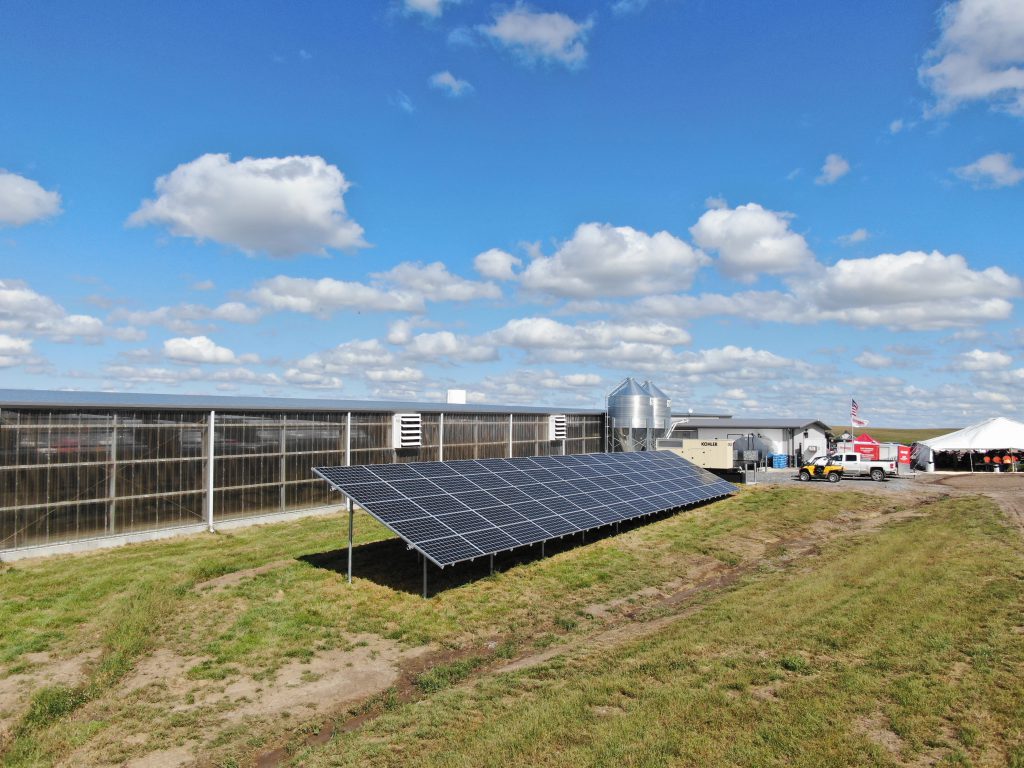
Do you ever see solar panels on houses and buildings and wonder, “is the cost of a solar panel worth the return in energy savings?” In some states, such as the coastal states and in the south, the amount of daily sunlight makes up for the seemingly expensive investment for solar panels. The tax write-offs, low environmental impact, and less bills to the energy company can be great benefits for those who can harvest the resource. But what about in the Midwest?
Solar Investment
We typically hear that solar equipment investment is through the roof, but with federal and local incentives, 2019 is the time to consider adding solar harvesting to your home, business or farm. Currently, the federal tax credit to any system installed is 30% for the state, with some states, counties and local communities offering more incentive. One example for a 5-kW rooftop solar system is that with an initial cost of around $20,000 for equipment, you will get around $6,000 back from federal credit to your taxes and another $700 in energy savings for the first year, making your investment on the first year total around $13,300, without other local credits. Of course, there are many loan opportunities as well to minimize the initial costs of the system.

Solar farm, photo from UNL CropWatch
With continued energy savings, your system will pay for itself after 15-17 years. The net “profit” from this type of system after 25 years is almost $10,000, which can be a huge benefit to your land, not to mention the increase of the home or building value!
Another question about solar energy is what happens if your home or business does not use the amount of energy that the solar equipment produces. In Nebraska, net metering is possible, meaning your “extra” energy is sent to the local power company and stored as credit for you to use in the future, such as in the rainy seasons when sunlight is minimized. Some states offer full net metering abilities, but some states, such as South Dakota, don’t offer this program at all. To check if your state allows net metering, visit the Solar Energy Industries Association website.
In Production Facilities
In some animal production settings, it could be very beneficial to use “dead space” on a confinement facility or feedyard to install solar panels to help power office buildings, scales, and more. Also with the possibility of net metering, you could save up energy to also use in your home. Current businesses in the solar industry are also researching how solar panels are used for shade on cattle feedlots, providing a win-win situation for energy conservation and cattle gains.

Solar panels on a robotic dairy facility
A great example of the use of solar panels in animal agriculture is pictured here, with a solar panel system installed on an SASE customer’s operation, which is a 240-head, fully robotic dairy facility. This solar power system provides approximately 25% of the power requirements for the facility. The customer is able to generate power and sell it back into the local grid at a one-to-one payback on the price of electricity. In this example, local and state incentives for solar power proved to ease the investment cost substantially, while also decreasing the net cost for electricity in the operation.
What’s Next?
If solar energy interests you and could be valuable to your current business, farm or home, here are the next steps to determine if you should consult a company for pricing. First, determine if you have a good site for the panels, that can face south and not have shade interference. It’s necessary for the panels to face south without obstruction to optimize the sunlight we receive in the northern hemisphere. Next, it’s wise to consult your local utility company for net-metering regulations and the cost of solar installation, per their recommendation. As mentioned above, some utility companies need the extra energy from net metering, but some might be in surplus. Most local utility companies will want to sit down with you to determine if the costs balance with your energy usage and the production from the panels, so everyone is in a win-win situation.
Contact local, state, and federal programs for grant eligibility and tax credits, and apply for those as soon as you get state approval (if needed) for the solar panels. In some areas, grants and government funding can cover almost half of the initial costs of the panels! University of Nebraska-Lincoln published an article in 2016 about investment analysis and how to analyze if solar production is right for your area, which can also be found on their CropWatch website. Overall, here in the Midwest, we may be overlooked for the value of harvesting solar energy, but new incentives for panels can make the investment worth it in the long run.
